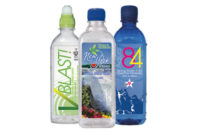Ten months ago, Snow Beverages completely reinvented its brand. Snow, now a natural soda with vitamins, replaced the mint soda the company launched in 2005. But don’t call it a “health drink.”
“I don’t see it as a health drink,” says Snow’s Founder Stu Strumwasser. “But it is certainly not unhealthy. I think that is really important because there are a lot of people who enjoy soda. There are a lot of people who like carbonation, but they don’t want to drink something that is bad for them.”
Snow distinguishes itself in three ways, he says. First, Snow is one of the few carbonated soft drinks that are fortified. The beverages contain vitamins C, B3, B5, B6 and B12 in addition to antioxidants in the form of EGCG. Second, Snow is available in popular consumer flavors, such as Pure Cola, Lemon Lime and Cranberry PomRaz, a blend of cranberry, pomegranate and raspberry, Strumwasser says.
“I already learned my lessons about trying to teach people an all new flavor,” he says in allusion to the mint soda he launched. “Of the three SKUs that we make, Cola and Lemon Lime make up the vast majority of carbonated soft drink sales right there.”
Third, Strumwasser believes that the company has built a platform for what could become a brand architecture with the word “Snow.”
“I really believe in our brand, and I think we have something tremendously valuable in the look, feel and the name ‘Snow’ that we will monetize over the coming years if we succeed,” he says. “Snow is more cool and refreshing than it is bitterly cold. The name perfectly describes the attributes of the product. It’s cool, clean, pure and refreshing.”
Packaged in 12-ounce slim cans, Snow appeals to 25- to 40-year-olds and tilts slightly toward females. What keeps Snow from skewing completely female is that it contains calories, Strumwasser says. Snow is sweetened with cane sugar, and contains between 75 to 80 calories in an 8-ounce serving.
Snow drifts
Snow is distributed in more than 1,000 retailers on the East Coast, from Massachusetts to Georgia, in a contiguous geographic footprint.
“We are going to grow in a very controlled way,” Strumwasser says. “We never launch anywhere that we don’t feel confident that we don’t have the tools, resources and ability to make it successful. We continue to look right now to be business partners of the one, two or three chains in their markets who have the tools available that we know we can successfully support the product from a marketing and promotional perspective.”
The company markets Snow through high-value coupons, and has distributed coupons for free product. This led to widespread trial and allowed Snow to gather data, Strumwasser says. In the upcoming months, Snow also plans to drop pricing.
“We have made some improvements and changes in our cost structure that are enabling us to roll out a price decrease,” Strumwasser says. “Our suggested retail in two months is going to be $1.19 in grocery stores, which is dramatically lower than products that appear in our packaging.”
The new pricing will allow Snow to promote on a regular basis at $0.99, he adds.
Snow also believes in being a good corporate citizen, and conducts a marketing program, “Save the Snowflakes,” with the primary objective of educating elementary age school children about global warming. In addition, Snow is a member of One Percent For The Planet, an alliance of businesses that donate at least 1 percent of their annual revenues to environmental organizations worldwide.
Snow currently only sells its line in singles, but plans in early 2010 to launch a four-pack and is also looking into family-sized packages. The company also plans to explore natural non-caloric sweeteners, and to launch additional flavors in the next couple years.
“Our intention is to address some of the larger existing CSD categories in terms of flavor, but to do it with a more natural, more contemporary, more modern spin,” Strumwasser says. BI
